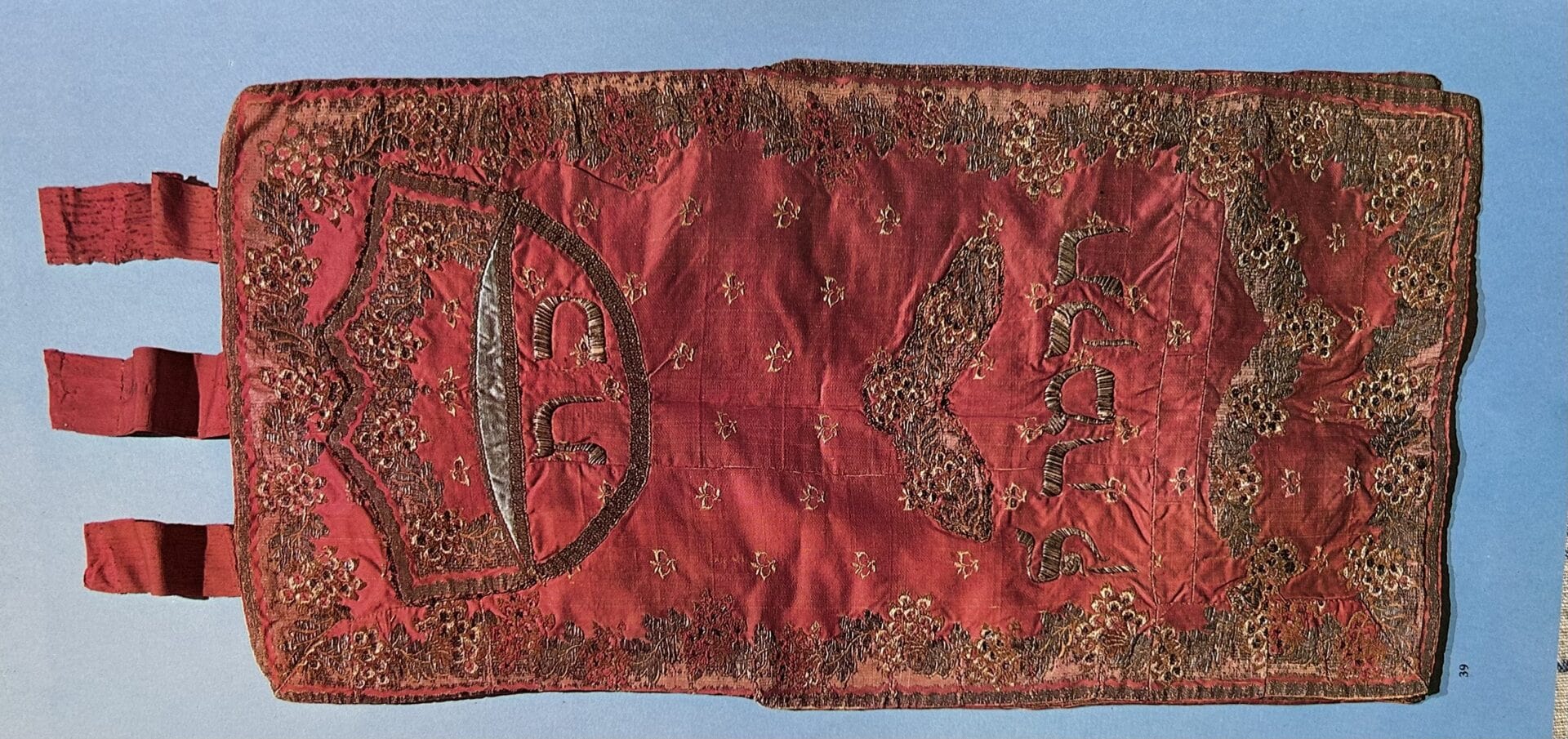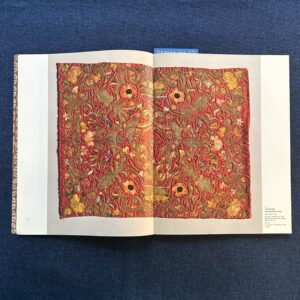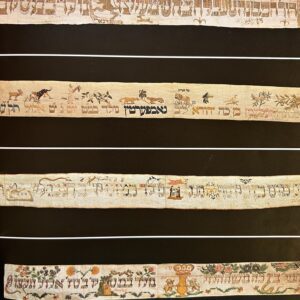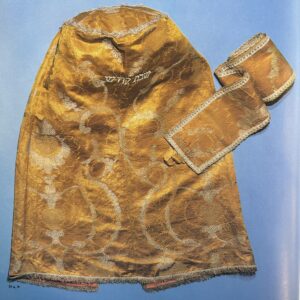
Tonight begins the Jewish New Year, called Rosh Hashanah. Here at Tatter, the holiday gives us the opportunity to look closely at some of the beautiful Torah scroll mantles depicted in the book “The Fabric of Jewish Life: Textiles from the Jewish Museum Collection,” one of several books to include examples of these beautiful, sacred items.

On Rosh Hashanah, Jewish congregations around the world will bring out and read from two Torah scrolls. Torah scrolls are long, handwritten texts which are made from specially prepared parchment and contain the five books of Moses; they are carefully and lovingly created, maintained, and preserved as sacred objects. In ancient times, Torah scrolls were wrapped in lengths of decorated linen or wool cloth called mitpaḥot. Today, different communities across the Jewish diaspora have their own traditions for protecting their scrolls. In early-modern Europe beginning in the fifteenth and sixteenth centuries, Sephardi and Ashkenazi Jewish congregations began to create binders, mantles, and wimpels to clothe their scrolls. Often made from fine fabrics, such as silk and velvet, these were elaborately ornamented with embroidered and appliqued bible verses and scenes as well as the names of community members and important dates such as births, marriages, and deaths.

A Torah scroll is not just a text; in many ways, it is a member of the community. It is kissed and touched with care, clothed in lovingly made vestments, and buried in the cemetery if it gets damaged beyond repair. In the German Jewish tradition, when a boy was born, the linen cloth that he was wrapped in at his circumcision would become the wimpel that would wrap the Torah scroll at his bar mitzvah. Throughout his childhood and at significant moments in his life, his loved ones would add embroidered and appliqued designs to the cloth to record his life and his lineage. Moroccan Jewish communities favored velvet mantles embroidered with the Tree of Life in silk thread; Algerian Jews preferred to depict an open gate which is especially significant during the High Holidays when the gates of heaven are said to be open and the divine is most likely to hear prayers and repentance.

For more information on Torah mantles and the beautiful textiles that can be found in the Jewish museum, come by the library and check out Fabric of Jewish Life: Textiles from the Jewish Museum Collection. A very sweet New Year from Tatter!
